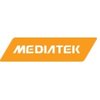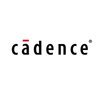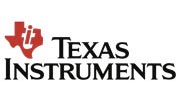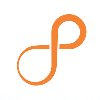Filter interviews by
Mirafra Technologies Physical Design Engineer Interview Questions and Answers
Mirafra Technologies Physical Design Engineer Interview Experiences
1 interview found
I applied via Referral and was interviewed before Nov 2021. There were 2 interview rounds.

(2 Questions)
- Q1. Interview based on EMIR ànalysis 1. Static and Dynamic Ir drop questions
- Q2. Power and signal EM questions
Interview Preparation Tips
Physical Design Engineer Jobs at Mirafra Technologies
Top trending discussions






Interview questions from similar companies

Physical Design Engineer Interview Questions & Answers
LeadSoc Technologies Indiaposted on 26 Nov 2024
I was interviewed in Oct 2024.
(5 Questions)
- Q1. Describe the PD flow
- Ans.
The PD flow is the process of designing the physical layout of integrated circuits.
Initial floorplanning to determine the placement of blocks and macros
Placement and optimization of standard cells
Routing of interconnects to connect the various components
Physical verification to ensure design rules are met
Timing closure to meet performance targets
- Q2. How to fix setup and hold violation
- Ans.
Setup and hold violations can be fixed by adjusting timing constraints, optimizing clock tree, and redesigning critical paths.
Adjust timing constraints to allow more time for signals to propagate
Optimize clock tree to reduce clock skew and improve timing
Redesign critical paths by adding buffers or restructuring logic
Use ECO (Engineering Change Order) to make necessary changes without redoing the entire design
- Q3. What is you domain experties
- Ans.
My domain expertise is in physical design engineering, specifically in the areas of floorplanning, placement, routing, and timing closure.
Floorplanning
Placement
Routing
Timing closure
- Q4. Why are you looking for job switch
- Q5. Why does setup and hold ail on same path
- Ans.
Setup and hold time violations can occur on the same path due to different reasons.
Timing violations can occur due to variations in process, voltage, and temperature (PVT)
Clock skew between different paths can lead to setup and hold violations on the same path
Issues with clock tree synthesis or routing can also contribute to setup and hold time violations
Improper constraints or incorrect timing analysis setup can resul

I applied via Campus Placement and was interviewed in Aug 2024. There were 3 interview rounds.
Aotitude,core que on all subjects in ece
(2 Questions)
- Q1. INTERNSHIP EXPERIENCE
- Ans.
I completed a 6-month internship at XYZ Company where I gained hands-on experience in physical design tools and methodologies.
Worked on floorplanning, placement, and routing of digital designs
Utilized tools such as Cadence Innovus and Synopsys ICC
Collaborated with cross-functional teams to optimize design performance
- Q2. ON DSD,VLSI,ANALOG ELECTRONICS
(2 Questions)
- Q1. APTITUDE,MATH,VLSI,DSD
- Q2. VLSI (HARD QUESTION BASED ON INDUSTRY LEVEL LIKE ON CIRCUIT HE GIVES ONE SCENARIO U HAVE TO ANSWER IT)
Interview Preparation Tips

Physical Design Engineer Interview Questions & Answers
MediaTek India Technologyposted on 10 Jul 2024
(1 Question)
- Q1. Is setup and hold uncertainty values are different
- Ans.
Yes, setup and hold uncertainty values are different in physical design engineering.
Setup uncertainty is related to the arrival time of the data signal at the input of the flip-flop, while hold uncertainty is related to the removal time of the data signal.
Setup time is the minimum amount of time the data input must be stable before the clock edge, while hold time is the minimum amount of time the data input must be sta...
Physical Design Engineer Interview Questions & Answers
DIGICOMM Semiconductorposted on 11 Oct 2023
I applied via Approached by Company and was interviewed in Apr 2023. There were 2 interview rounds.

(8 Questions)
- Q1. What are the PD inputs and outputs
- Ans.
PD inputs are design specifications and constraints, while outputs are physical layout of the design.
Inputs include design specifications, constraints, technology libraries, and floorplan.
Outputs include physical layout, placement of components, routing of wires, and design verification.
Example: Input - RTL design, clock frequency, power constraints. Output - GDSII layout, timing analysis report.
- Q2. Describe each stage of PNR flow
- Ans.
PNR flow consists of synthesis, floorplanning, placement, clock tree synthesis, routing, and signoff stages.
Synthesis: Convert RTL code to gate-level netlist
Floorplanning: Define chip area, core, and I/O locations
Placement: Place gates in specific locations to meet timing constraints
Clock tree synthesis: Create clock distribution network
Routing: Connect gates with wires while considering timing and congestion
Signoff: V...
- Q3. What are the different techniques to minimize congestion?
- Ans.
Techniques to minimize congestion include buffer insertion, wire spreading, and layer assignment.
Buffer insertion: Adding buffers to critical paths to improve timing and reduce congestion.
Wire spreading: Distributing wires evenly to reduce congestion in specific areas.
Layer assignment: Properly assigning different signal layers to reduce congestion on a single layer.
- Q4. What is the setup and hold time and different techniques to fix the setup and hold time violations?
- Ans.
Setup and hold time are timing constraints in digital circuits. Techniques to fix violations include adjusting clock skew, buffering signals, and optimizing routing.
Setup time is the minimum amount of time a data input must be stable before the clock edge for proper operation.
Hold time is the minimum amount of time a data input must be stable after the clock edge for proper operation.
Techniques to fix setup and hold ti...
- Q5. What is signal integrity?
- Ans.
Signal integrity refers to the quality of an electrical signal as it travels through a circuit or system.
It involves ensuring that the signal remains clear and undistorted from the transmitter to the receiver.
Factors affecting signal integrity include impedance matching, noise, crosstalk, and reflections.
Signal integrity analysis is crucial in high-speed digital design to prevent data errors and ensure reliable communi...
- Q6. What is crosstalk and noise and how to fix it?
- Ans.
Crosstalk is unwanted interference between signals on adjacent lines, while noise is random unwanted signals that can degrade performance.
Crosstalk occurs when signals on adjacent lines interfere with each other due to coupling effects.
Noise is random unwanted signals that can be caused by various sources such as electromagnetic interference or power supply fluctuations.
To fix crosstalk, techniques like spacing out lin...
- Q7. What is clock latency, skew and jitter?
- Ans.
Clock latency is the delay between the clock signal being generated and reaching the destination, skew is the variation in arrival times of the clock signal at different destinations, and jitter is the variation in the period of the clock signal.
Clock latency is the delay between the clock signal being generated and reaching the destination.
Skew is the variation in arrival times of the clock signal at different destina...
- Q8. What is useful skew, negative skew and positive skew?
- Ans.
Useful skew, negative skew, and positive skew are terms used in physical design to describe timing constraints.
Useful skew refers to intentional delay added to certain paths to meet timing requirements.
Negative skew occurs when data arrives later than expected, leading to potential timing violations.
Positive skew occurs when data arrives earlier than expected, potentially causing setup time violations.
Skew can be adjus...
Interview Preparation Tips
- STATIC TIMING ANALYSIS
- Physical Design
- FORMAL VERIFICATION
- Physical Verification
Skills evaluated in this interview

Physical Design Engineer Interview Questions & Answers
Synapse Designposted on 7 Apr 2023
I applied via Recruitment Consulltant and was interviewed in Mar 2023. There were 3 interview rounds.

(2 Questions)
- Q1. What is an ICG? How would you use it in the design?
- Ans.
ICG stands for Inter-Chip Global. It is a network that connects multiple chips in a system.
ICG is used to transfer data between different chips in a system
It helps in reducing the number of wires required for communication between chips
ICG can be used in various design aspects such as clock distribution, power management, and data transfer
Example: In a multi-chip system, ICG can be used to transfer clock signals from o
- Q2. How will MSCTS help at SOC level CTS
- Ans.
MSCTS can help in achieving better clock distribution and reducing skew at SOC level CTS.
MSCTS (Multi-Source Clock Tree Synthesis) can optimize the clock tree for better skew and jitter performance.
It can also help in reducing power consumption by optimizing the clock network.
MSCTS can handle multiple clock sources and ensure proper synchronization.
It can also help in meeting timing constraints and reducing clock tree ...
(2 Questions)
- Q1. What was the most difficult challenge faced in the projects you worked?
- Q2. How will you fix setup and hold time when both are violating at the same time.
- Ans.
Fixing setup and hold time violations simultaneously requires adjusting clock timing and/or data path delays.
Identify the critical path causing the violations
Adjust the clock timing to meet setup and hold requirements
Adjust the data path delays to meet setup and hold requirements
Use tools like static timing analysis and delay calculation to determine necessary adjustments
Iteratively adjust timing and delays until viola
Interview Preparation Tips
Skills evaluated in this interview
Design & Verification Engineer Interview Questions & Answers
Tessolve Semiconductorposted on 31 Dec 2024
I was interviewed in Dec 2024.
(2 Questions)
- Q1. Sv hvm questions on constraiants and assertions
- Q2. Questions on resume projects
(2 Questions)
- Q1. Questions on protocols
- Q2. Sv uvm questions
(2 Questions)
- Q1. Salary and pckge discussion
- Q2. Details on client interview
(2 Questions)
- Q1. Projects and challenges
- Q2. Sv uvm basics

Design & Verification Engineer Interview Questions & Answers
Cadence Design Systemsposted on 7 May 2024
I applied via Referral and was interviewed in Apr 2024. There was 1 interview round.
(2 Questions)
- Q1. Simple FSM given similar to mux and asked for testcases and assertions.
- Q2. Coverage to write transitions of states.
- Ans.
Coverage-driven verification techniques are used to ensure all possible state transitions are exercised.
Coverage metrics like state, transition, and toggle coverage can be used to track the completeness of state transitions.
Writing directed tests to cover specific state transitions can help achieve higher coverage.
Random stimulus generation can also be used to explore different state transitions.
Functional coverage can...

I applied via LinkedIn and was interviewed in Oct 2023. There were 2 interview rounds.
40 aptitude qns and some mcqs on basic programming
(4 Questions)
- Q1. I was asked to write two sum, palindrome function and merge sort code in whatever language I'm comfortable in
- Q2. Two sum- return true or false
- Ans.
Given an array of integers, determine if there are two numbers that add up to a specific target.
Iterate through the array and store each element in a hash set.
For each element, check if the difference between the target and the element exists in the hash set.
If the difference exists, return true; otherwise, continue iterating.
Example: nums = [2, 7, 11, 15], target = 9. The function should return true as 2 + 7 = 9.
- Q3. Merge sort function code
- Q4. Palindromic string or not
Skills evaluated in this interview

Verification Engineer Interview Questions & Answers
Micron Technologyposted on 15 Apr 2024
I applied via Referral and was interviewed before Apr 2023. There were 3 interview rounds.
(1 Question)
- Q1. Asked the working experience and the related skills to the new job
(1 Question)
- Q1. Coding questions in Verilog, Systemverilog, random constraints such as how to write a onehot in different ways
(1 Question)
- Q1. Asked the expectation of the base salary and overall compensation
Interview Preparation Tips
- SystemVerilog coding
Mirafra Technologies Interview FAQs
Tell us how to improve this page.
Mirafra Technologies Interviews By Designations
- Mirafra Technologies Software Engineer Interview Questions
- Mirafra Technologies Senior Software Engineer Interview Questions
- Mirafra Technologies Design & Verification Engineer Interview Questions
- Mirafra Technologies Embedded Software Engineer Interview Questions
- Mirafra Technologies Software Developer Interview Questions
- Mirafra Technologies Python Developer Interview Questions
- Mirafra Technologies Analog Layout Engineer Interview Questions
- Mirafra Technologies Assistant Learning and Development Manager Interview Questions
- Show more
Interview Questions for Popular Designations
- Physical Design Engineer Trainee Interview Questions
- Embedded Engineer Interview Questions
- Design & Verification Engineer Interview Questions
- Verification Engineer Interview Questions
- Embedded Developer Interview Questions
- Embedded Firmware Engineer Interview Questions
- Physical Education Teacher Interview Questions
- Post Silicon Validation Engineer Interview Questions
- Show more
People are getting interviews through
Interview Questions from Similar Companies
Mirafra Technologies Physical Design Engineer Reviews and Ratings
based on 6 reviews
Rating in categories
|
Senior Software Engineer
282
salaries
| ₹6 L/yr - ₹22 L/yr |
|
Member Technical Staff
135
salaries
| ₹9 L/yr - ₹30 L/yr |
|
Software Engineer
112
salaries
| ₹3 L/yr - ₹12 L/yr |
|
Physical Design Engineer
54
salaries
| ₹5 L/yr - ₹16.1 L/yr |
|
Software Engineer2
49
salaries
| ₹5 L/yr - ₹12.8 L/yr |

Sasken

Einfochips

Cyient

L&T Technology Services
Calculate your in-hand salary
- Home >
- Interviews >
- Mirafra Technologies Interview Questions >
- Mirafra Technologies Physical Design Engineer Interview Questions







